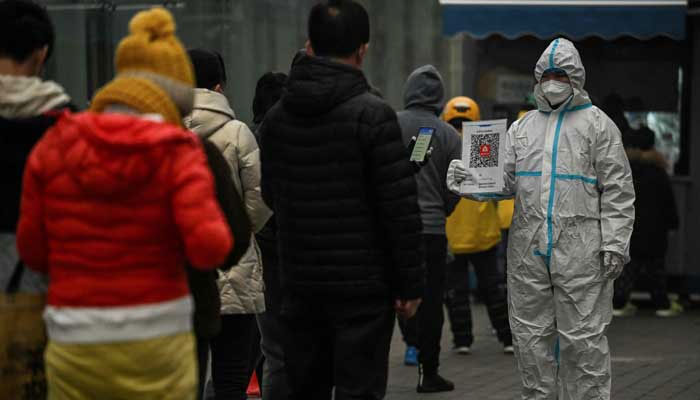China braces for new wave of Covid cases, predicted to reach 65mn weekly
This forecast is alarming for a country that implemented some of the strictest Covid control measures worldwide
May 26, 2023

China is preparing for a potential new wave of Covid-19 infections, with projections indicating that the number of cases could reach as high as 65 million per week by the end of June. This forecast is alarming for a country that only a few months ago had implemented some of the strictest Covid control measures worldwide. However, in response to the latest variant, known as XBB or omicron, the Chinese government and the public are displaying a relatively muted reaction.
Approximately six months ago, China dismantled the extensive infrastructure that had been in place to combat the virus. This infrastructure included strict lockdowns, widespread testing, mandatory quarantines, and stringent mask requirements. However, the current surge in cases, driven by the omicron variant, has prompted a subdued response from both the government and the public.
Zhong Nanshan, a specialist in respiratory diseases, unveiled data at a medical conference in Guangzhou, revealing that the wave of infections, which began in late April, was anticipated. His modelling indicated that China could witness up to 40 million infections per week, peaking at 65 million by the end of June. To put this into perspective, at its peak in January, the United States reported over 5 million cases per week. However, China has recently stopped providing weekly case updates, making it difficult to ascertain the true extent of the current outbreak.
While the United States is engaging in discussions with allies and partners regarding China's second Covid wave, the State Department has not confirmed whether travel restrictions are being considered. The focus remains on monitoring the situation in coordination with the Centers for Disease Control and Prevention (CDC) before updating travel guidelines. The U.S. government emphasises the importance of collaboration with China on global health matters and maintaining open lines of communication.
In the previous omicron wave in December and January, a different variant of the virus wreaked havoc in China, infecting millions and overwhelming hospitals and crematoriums. However, immunity may have waned since then, increasing the risk of reinfection. Zhong mentioned that the government has given preliminary approval for two vaccines targeting the XBB subvariants, and more approvals could follow soon.
China's subdued response can be attributed to its efforts to revive the economy and reassure foreign businesses, including those from the United States. The return of stringent restrictions could negatively impact businesses, so stability and clarity are being sought to facilitate planning.
The public's perception of the current wave is also influenced by a change in government messaging. There is fewer media coverage creating fear among the population, no alarming videos to alert people, and no strict measures like lockdowns. Consequently, some individuals have reported perceiving milder symptoms this time around. However, there are also concerns about whether the initial strict measures were necessary, considering the current situation.
The landscape has significantly shifted since the early days of the pandemic, and China is facing new challenges with the omicron variant. The country is navigating a delicate balance between managing the virus's spread and promoting economic stability, while also addressing public sentiment and ensuring clarity in communication.











